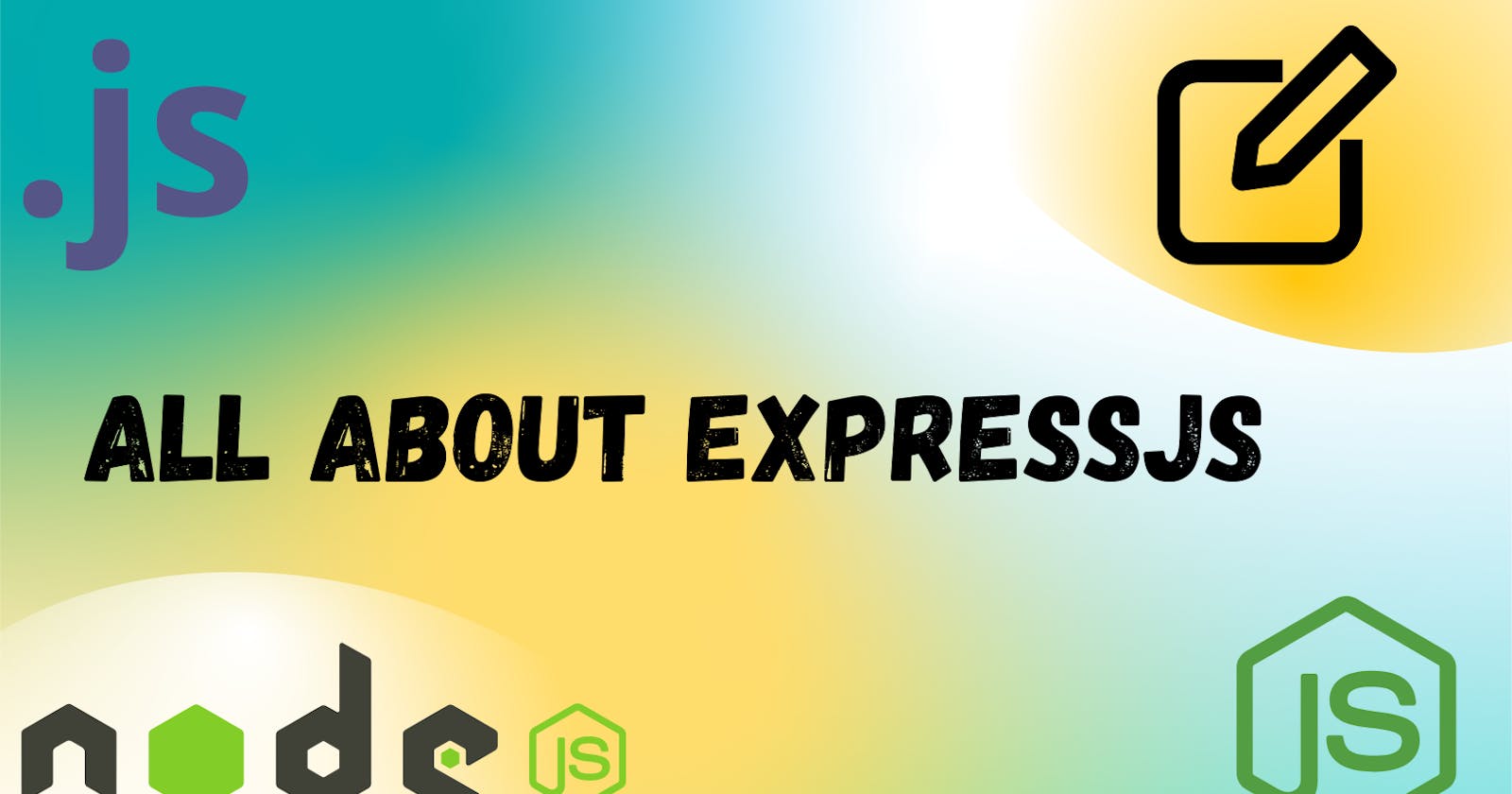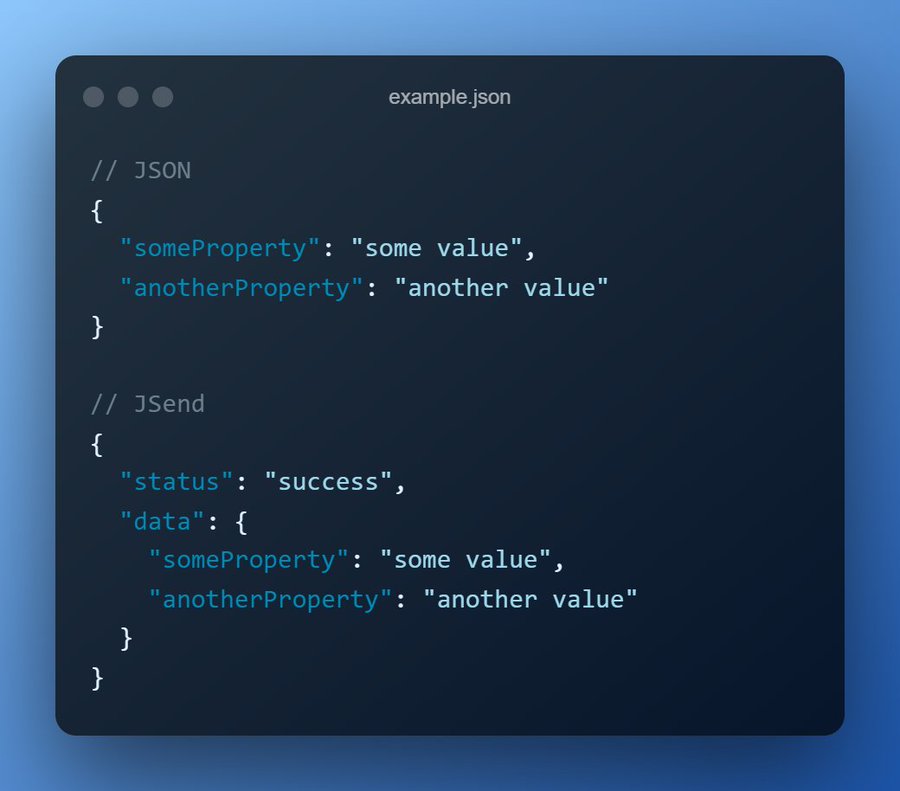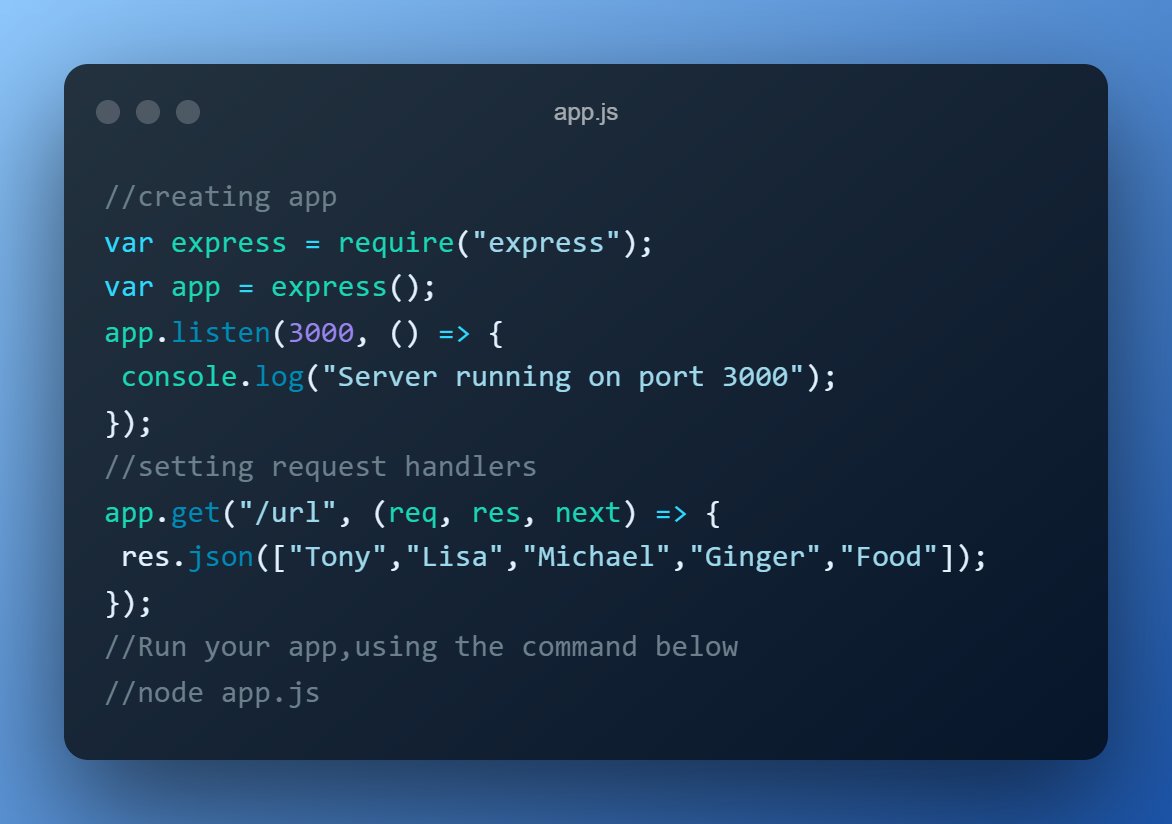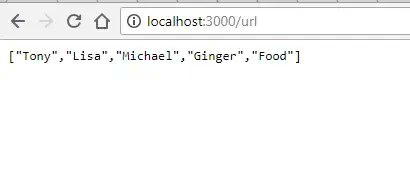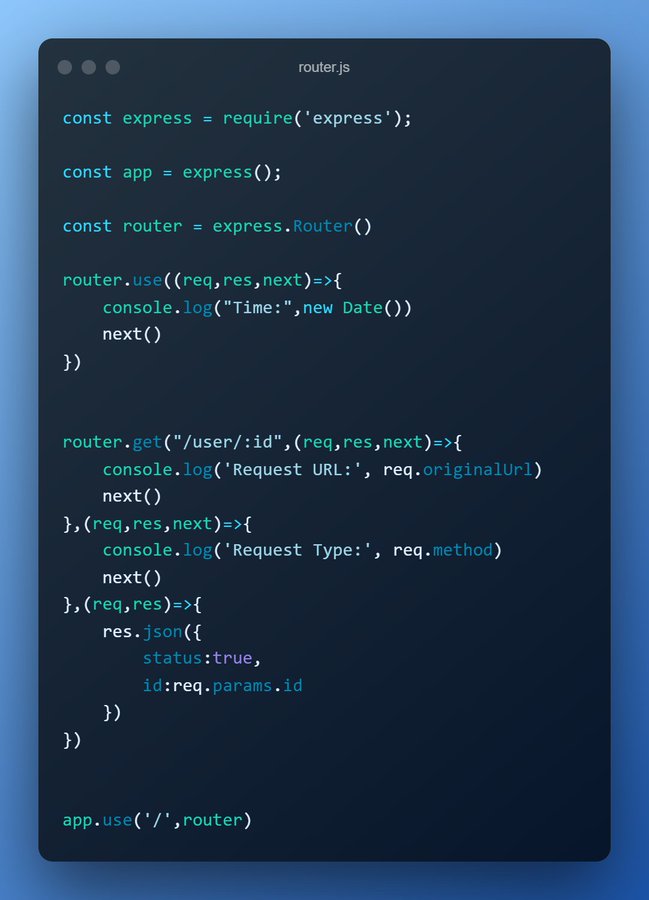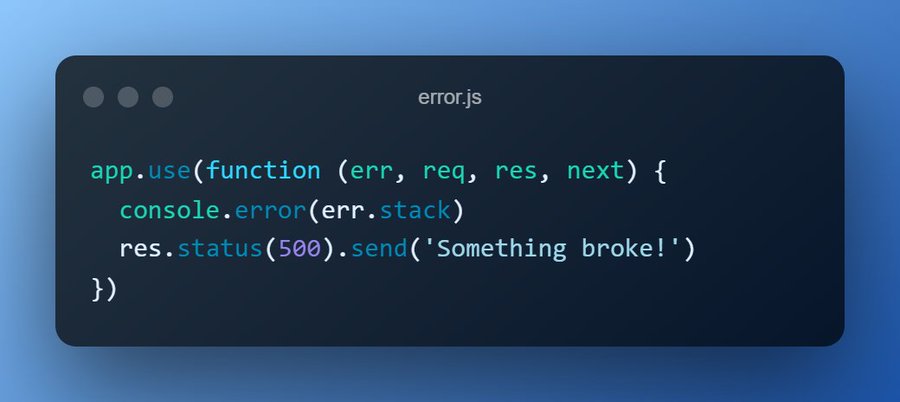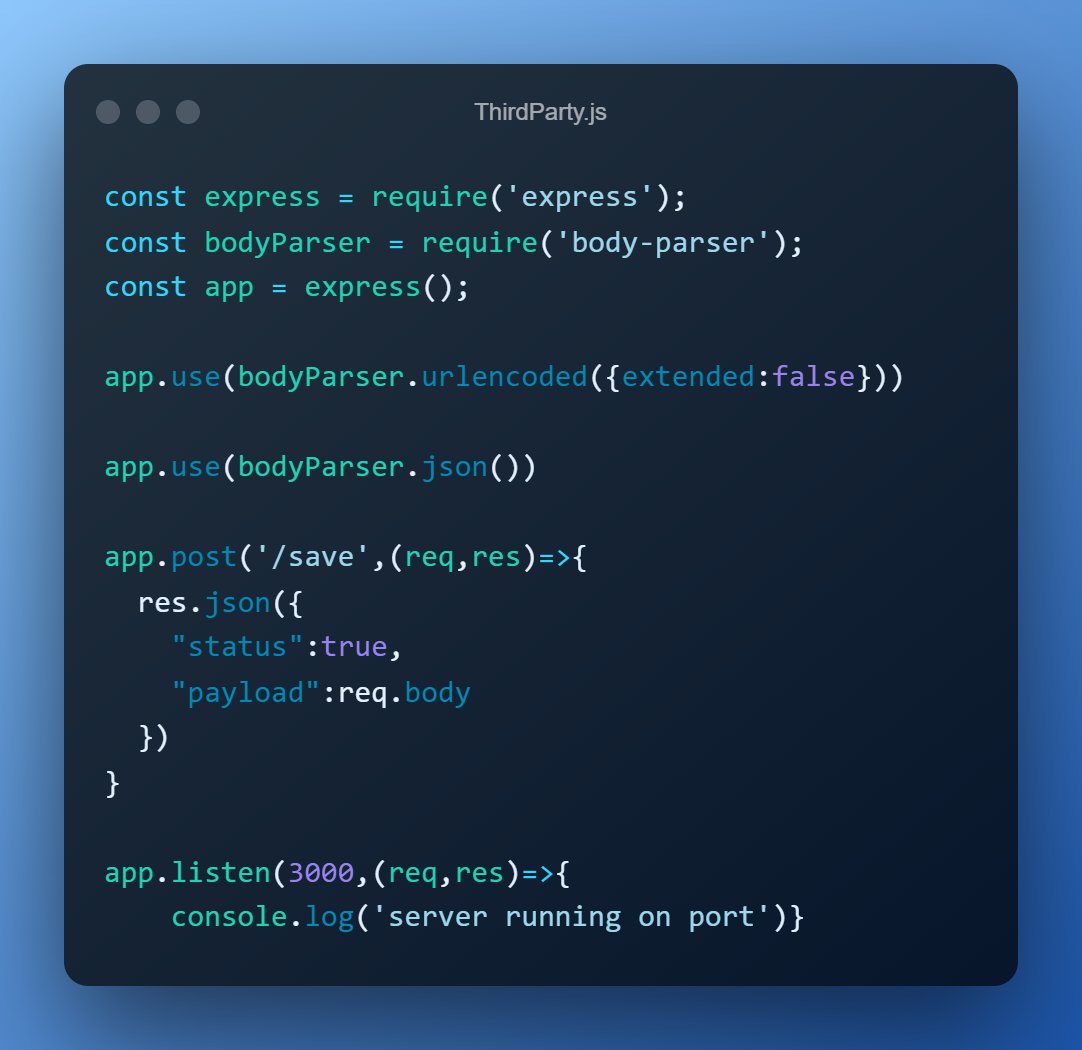Table of contents
Welcome, here we explore the world of ExpressJS and its incredible potential for web development. From beginners to experienced developers, our content has something for everyone interested in this powerful technology.
Learn all about ExpressJS by following the article hands-on.
I included working code snippets and a walkthrough of every concept in ExpressJs.
you might be wondering what exactly is ExpressJS 🤔 and why is it important.
Express is majorly responsible for handling the backend part of the MERN/MEAN stack.
It is the open-source JavaScript software stack that is heavily used for building dynamic websites and web applications in the market.
Let's begin!!! 🚀🚀
What is ExpressJS?
Express.js is a fast and lightweight framework used majorly for web application development.
It's a web application framework that is built on top of Nodejs.
ExpressJS with NodeJS is analogous to Bootstrap with HTML/ CSS.
Node.js Developers all over the world are totally in love with this framework.
It was developed by TJ Holowaychuk and was released in the market on the 22nd of May, 2010.
Formerly it was managed by IBM but currently, it is placed under the stewardship of the Node.js Foundation incubator.
Why ExpressJS?
Express.js provides all the features of web applications without overshadowing the Node.js features.
It helps in the easy management of the flow of data between servers and routes in server-side applications.
It offers a simple interface for creating applications.
It gives us the resources needed to create apps.
It adds flexibility to an application.
It has a huge range of modules available on npm (Node Package Manager).
Installing Express.js
In order to install Express.js in your system, first, you need to make sure that you have Node.js already installed.
If not just follow my article on NodeJS where I explained the steps to Install NodeJS
Once you are done with NodeJS installation, the next step is to install Express.
To install Express.js, first, you need to create a project directory and create a package.json file that will be holding the project dependencies. Below is the code to perform the same:
npm init
Now, you can install the express.js package in your system. To install it globally, you can use the below command:
npm install -g express
Or, if you want to install it locally into your project folder, you need to execute the below command:
npm install express --save
Now that you are already done with the installation process, let’s now dive into Express.js.
Features of ExpressJS:
It quickens the development pace
It can create mobile and web applications
It can work with various templating engines(Pug, Mustache, and EJS)
It makes the integration process with databases effortless.
It defines an error-handling middleware
Routing and HTTP Methods
Routing refers to the process of determining a specific behavior of an application.
It is used for defining how an application should respond to a client request to a particular route, path, or URI along with a particular HTTP Request method.
Each route can contain more than one handler functions, which is executed when the user browses for a specific route. Below is the structure of Routing in Express:
app.METHOD(PATH, HANDLER)
Here:
app is just an instance of Express.js. You can use any variable of your choice .
METHOD is an HTTP request method such as get, set, put, delete, etc.
PATH is the route to the server for a specific webpage
HANDLER is the callback function that is executed when the matching route is found.
Four main HTTP methods can be supplied within the request. These methods help in specifying the operation requested by the user. The below table lists all methods along with their explanations:

Implementation :
A special routing method:
app. all(): used to load middleware functions at a common path.
A Callback is executed for requests, using GET, POST, PUT, or any other HTTP request method.
REST APIs
REST or RESTful stands for REpresentational State Transfer.
An API is two pieces of software communicating with each other.
It sends data to a client whenever a request comes in.
It is an architectural style as well as an approach for communications purposes that are often used in various web services development.
In simpler terms, it is an application program interface (API) that makes use of HTTP requests to GET, PUT, POST, and DELETE the data over WWW.
REST APIs principles:
They Separate the API into logical resources.
Expose structured, resource-based URLs.
Use the proper HTTP methods.
Send data as JSON (usually).
Before we send JSON to a user, we usually rewrite it in the JSend format.
Statelessness is when the client is responsible for storing and handling the session information on its own
To make an API stateless, we make sure that all state is handled on the client side.
The server should not have to remember previous requests to process current ones.
Steps to Create A REST API:
Middleware
In express, middleware functions are the functions that have access to the request and response objects along with the next function present in the application’s request-response cycle
These functions are capable of performing the below-listed tasks:
Execution of any code
Modify the request and the response objects.
End applications request-response cycle.
Call the next middleware present in the cycle.
response cycle then it must invoke the next() function in order to pass on the control to the next available middleware function.
If not done, then the request will be left incomplete. Below I have listed down the majorly used middlewares in any Express.js application:
Application-level middleware
Router-level middleware
Error-handling middleware
Built-in middleware
Third-party middleware
Application Level Middleware:
If we have five routes, every route must be authenticated.
Every GET and POST call required authentication.
Once the request comes the auth middleware will do some authentication logic that we have written inside it.
Router Level Middleware:
It is bound to an instance of express.Router().
Load router-level middleware by using the router.use() and router.METHOD() functions.
Error Handling Middleware:
Express JS comes with default error handling params.
we define the same as other middleware functions.
error-handling functions have four arguments instead of three.
Third-party Middlewares:
Used to add extra features to our backend.
They are a good alternative if there is a package available, offering functionality that our API will need.
They allow client access from different origins and parse the incoming request body data.
Cookies
Cookies in Express.js are the small files of information that are stored within a user’s computer.
They hold a decent amount of data specific to a particular user and the websites he visits.
Each time a client loads a website on his browser, the browser will implicitly send the locally stored data back to the website/server, to recognize the user.
A cookie generally consists of the following:
Name
Value
Zero or more attributes in key-value format. These attributes can include cookie’s expiration, domain, flags, etc.
Next Steps
Yay!! We reached the end, I hope you enjoyed the blog, If so don't forget to react.
If you want to learn NodeJS follow my article on NodeJS:
Make more amazing projects on ExpressJs to become powerful.
Follow this course for a detailed explanation:
Follow me on Twitter, for daily content Shreya-Twitter.
